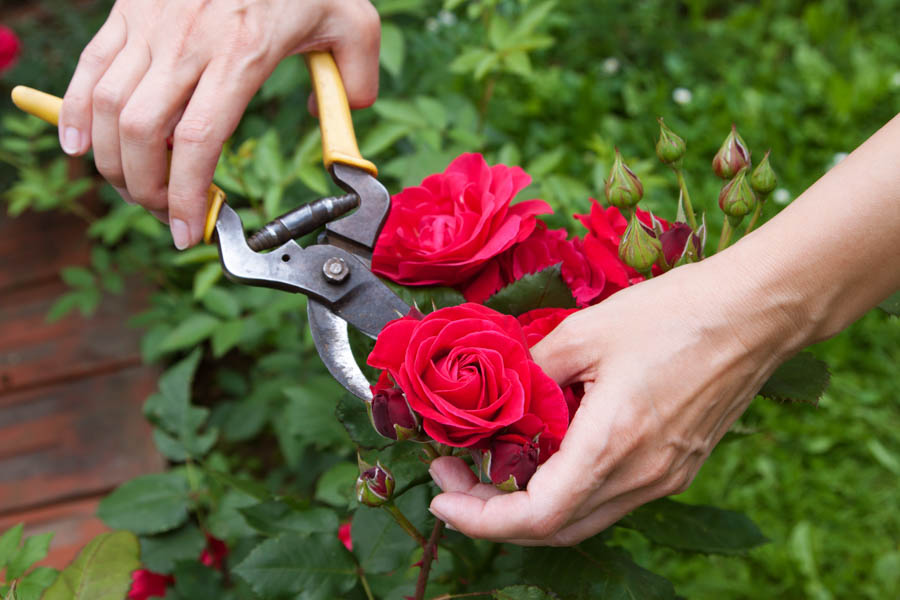Pruning Roses Between Blooms

While rose pruning will vary by type and species, most to all roses need light pruning after blooming. The purpose of this is to remove spent blooms, to prevent the rose from putting its energy into producing seeds (and therefore slowing production of the next round of blooms), to clean out any spent or dead canes, and to train minimally as needed for the next round of blooming.The basics that apply to all roses include sterilizing tools between plants, using sharp pruners, removing suckers, and the method of making cuts.
Use sharp pruning shears and other tools, which may require sharpening about every 15 minutes to an hour, depending upon how rapidly you cut, the quality of the tool blade, and how well preserved the blade’s bevel has been after prior sharpening.
Remove suckers and watersprouts, which are growths from the rose rootstock or stem at or below the plant’s graft. Many rose varieties are actually two plants, a rootstock and a scion, that are grafted and grown together as one plant to be sold by nurseries. To preserve the scion with its desirable blooms, all leafing growth from below the graft should be removed regularly or as needed multiple times per year. Suckers and watersprouts are often readily identifiable because stem color, thorn size, growth habit, or other characteristics differ obviously from the desirable blooming wood.
Make cuts at an angle slightly above a bud or node that naturally points in a desirable direction for new growth and blooming, with the cut pointing in the direction of the bud or node. Roses transport nutrients and fluids across stems, so be sure not to cut below the top of any bud or node, as this might inhibit the plant’s ability to produce strong, rapid growth, and might produce new stems that are weakly attached and prone to breakage.
Other articles about roses:
Should Organic Gardeners Fertilize Their Roses?
6 Tips For Growing Roses in Containers
Growing Roses in Containers: Common Problems
Don’t know your GardenZeus Climate Zone? Enter your zip code.
